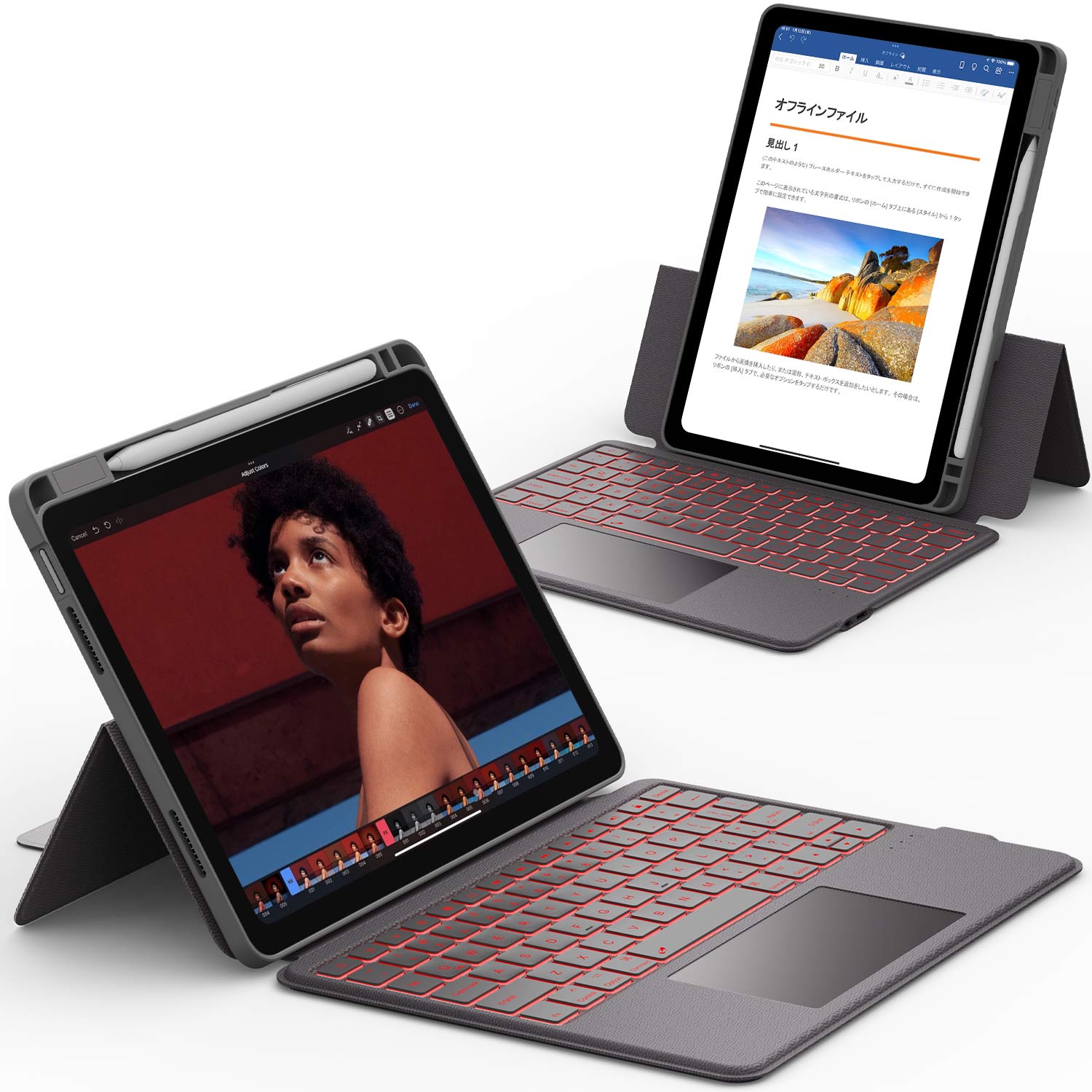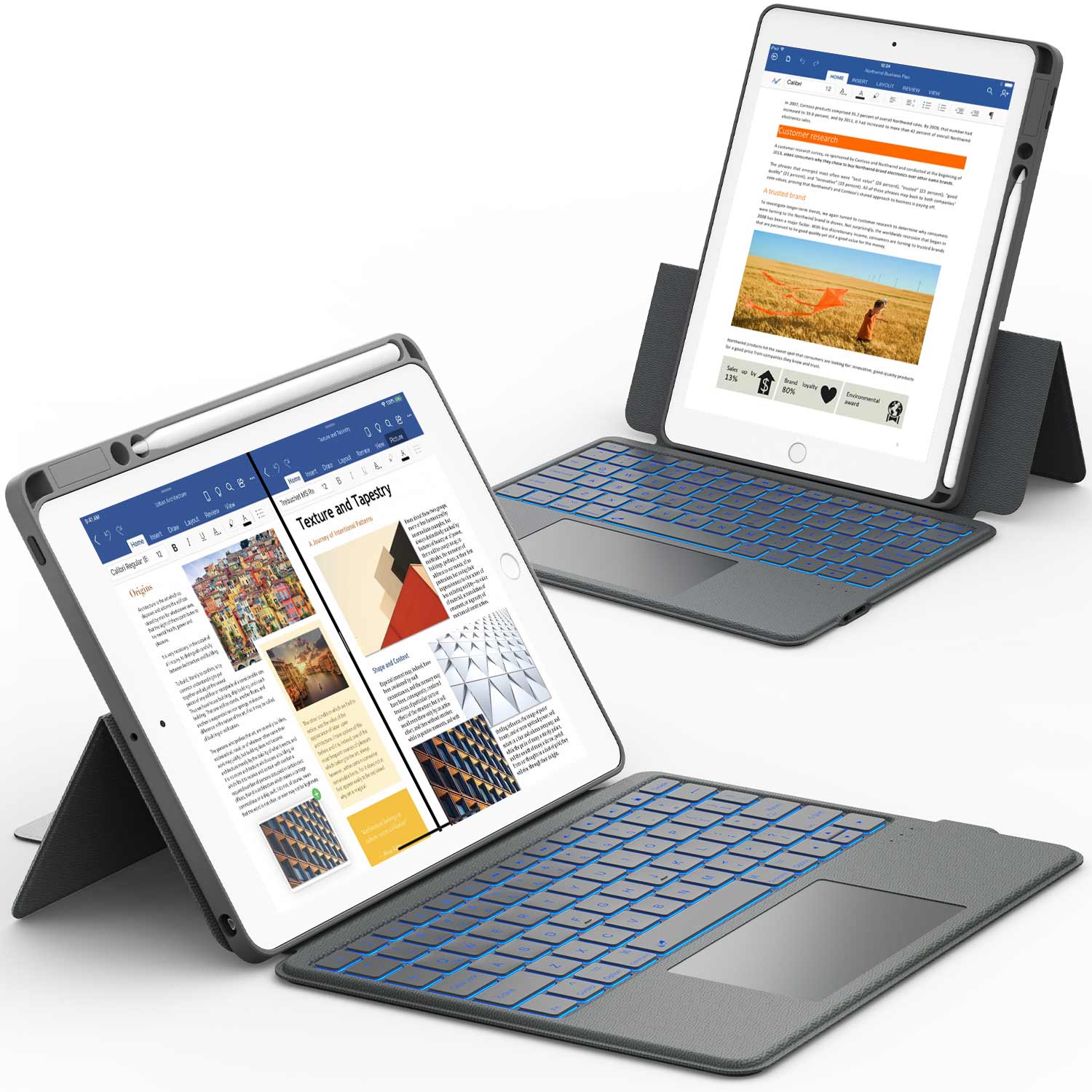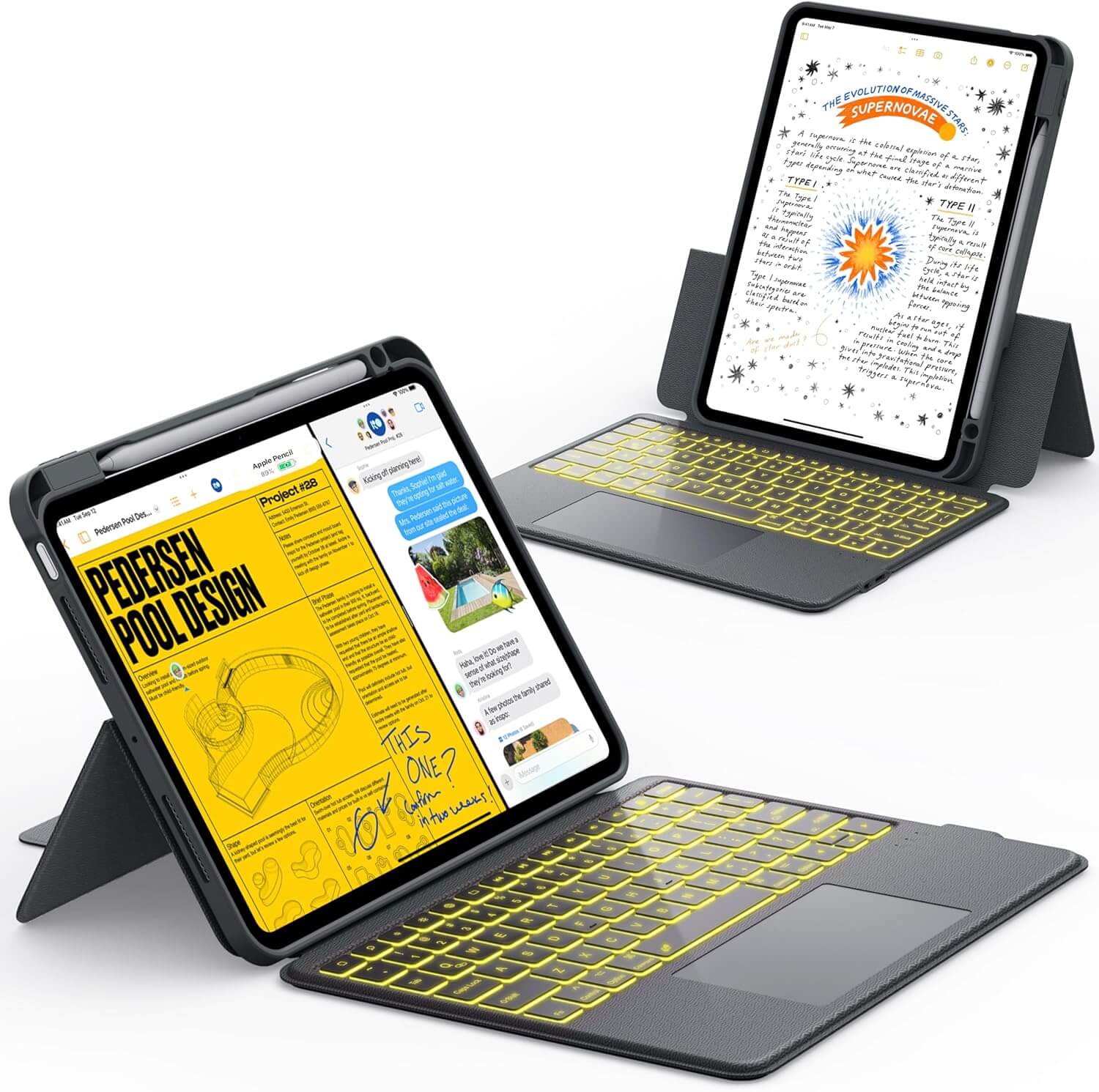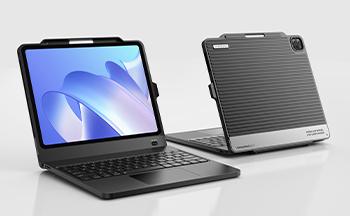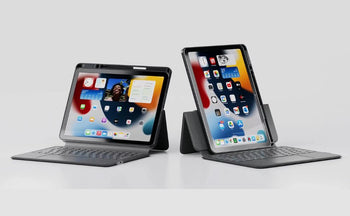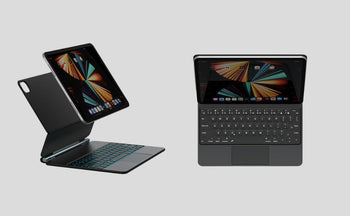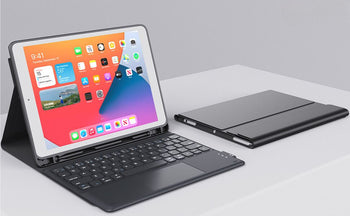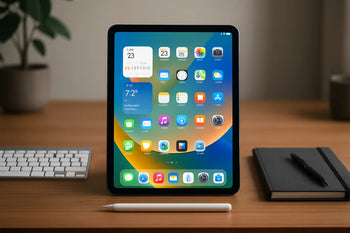Introduction
Choosing between the iPad Pro and MacBook Air isn’t just about comparing specs — it’s about how you actually work, create, and connect in your daily life. Both devices are powerful, but they’re built for different priorities.
The iPad Pro delivers unmatched portability, touch interaction, and Apple Pencil support. The MacBook Air, on the other hand, offers a more traditional laptop experience with longer battery life and better multitasking.
And here’s the real secret: if you lean toward the iPad Pro, the right accessories can close many of the gaps between tablet and laptop — giving you the flexibility of both.
Table of contents
Key Differences
| Category | iPad Pro (M4) | MacBook Air (M3) |
| Portability | Lighter (11": 0.98 lbs) | Heavier (13.6": 2.7 lbs) |
| Display | 120Hz OLED, touch & Pencil | 60Hz Retina, no touch |
| Performance | Better for graphics/AI | Better for multitasking |
| Battery | ~10 hrs | ~18 hrs |
| Keyboard | External, extra cost | Built-in |
| Software | iPadOS (touch-first) | macOS (desktop-first) |
| Best For | Creative work, mobility | Heavy productivity, coding |
iPad Pro’s Edge
If your work is visual, mobile, or creative-focused, the iPad Pro’s screen quality and touch interaction are hard to beat. It’s perfect for design sketches, photo edits, reading, and quick content creation anywhere.
But here’s the catch — its default form is limiting for serious multitasking. You have just one port, no built-in keyboard, and minimal storage flexibility. That’s where pairing it with the right keyboard dock changes everything.
Imagine being able to:
- Save large design or video files directly to an internal SSD for private storage
- Connect to a 4K display for presenting work or editing with more screen space
- Transfer photos instantly via SD card after a shoot
- Use multiple peripherals without juggling dongles
A well-designed dock not only gives you these capabilities but also keeps your iPad at a comfortable typing angle with a backlit keyboard and smooth trackpad control — turning it from a tablet into a portable creative studio.

MacBook Air’s Edge
If you spend most of your day in spreadsheets, code editors, or multi-window workflows, the MacBook Air’s built-in keyboard, multiple ports, and 18-hour battery life make it a better fit. macOS handles multitasking more fluidly and runs full desktop software without mobile limitations.
It’s also the safer choice for heavy text-based work or long hours without access to a charger. You simply open it up and start typing — no accessory setup required.
Price Check

On paper, both start at $999, but the iPad Pro’s full “work mode” setup adds up:
- iPad Pro 11" (M4): $999
- Keyboard: ~$200
- Pencil (optional): ~$129
If you already own accessories, the investment pays off in flexibility. But if you’re buying fresh, you’ll want to factor in those costs.
Best for Your Workflow
Pick the iPad Pro if:
- You value portability above all else
- You work with creative tools like Procreate, LumaFusion, or digital illustration apps
- You want a device that can shift between tablet and desktop-style modes
Pick the MacBook Air if:
- You need long battery life for all-day work
- You rely on desktop-class software or complex multitasking
- You prefer a traditional typing and file management experience
Final Verdict
The iPad Pro and MacBook Air aren’t direct replacements for each other — they’re two approaches to productivity. But with the right setup, the iPad Pro can handle far more than people expect.
If you choose the iPad Pro, don’t stop at the tablet itself. Equip it with a high-quality keyboard dock that expands ports, storage, and display options, and you’ll find yourself working as freely as you would on a laptop — with the bonus of touch and Pencil input whenever you need it.
No matter which device you choose, the right accessories can elevate your workflow—whether that’s turning an iPad into a true workstation or expanding your MacBook’s connectivity. See how our versatile keyboard case can help you work smarter.
